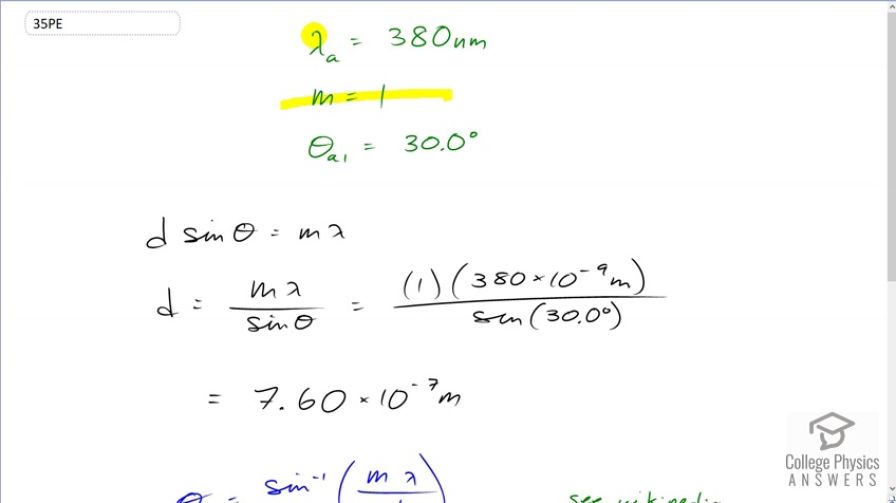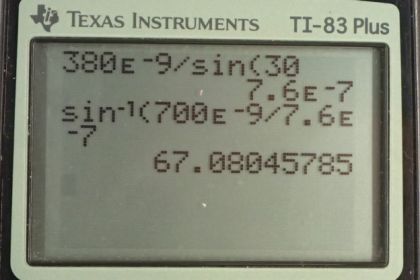Question
If a diffraction grating produces a first-order maximum for the shortest wavelength of visible light at , at what angle will the first-order maximum be for the longest wavelength of visible light?
Final Answer
Solution video
OpenStax College Physics, Chapter 27, Problem 35 (Problems & Exercises)

vote with a rating of
votes with an average rating of
.
Calculator Screenshots
Video Transcript
This is College Physics Answers with Shaun Dychko. This question tells us that the first order maxima for the shortest wavelength the visible light occurs at 30 degrees so the shortest wavelength that's possible is 380 nanometers. That's the color Violet. Or maybe you might say Indigo. And this Theta has two subscripts, the first subscript is s label for the wavelength, so this is wavelength a, and the second subscript is the order number, so this is the angle to the first order maxima of wavelength a and we're told that 30 degrees. And the question is what will the angle be to the first order maximum of the longest wavelength of visible light? So to answer that question we need to figure out what d is based on the information from lambda a. And then knowing d we can figure out what the angle will be to the longest wavelength of visible light which is 700 nanometers. So for a diffraction grating the maxima are given by this formula and we'll solve for d by dividing both sides by sine theta and we have at the separation between slits in the diffraction grating is the order times the wavelength divided by sine of the angle to the maximum. So the order for 380 nanometers written as times ten to the minus nine meters multiplied by the order one divided by sine of 30 degrees is 7.6 times ten to the minus seven meters. So that's the separation between slits and then we can also solve this for theta by dividing both sides by d and then taking the inverse sine of both sides. We get this formula that theta is the inverse sine of m lambda over d. So we want the first order maximum. So m is one and we want the longest wavelength of visible light which is 700 times ten to the minus nine meters according to Wikipedia article I’ve read, and divide that by the separation between slits that we calculated just now which is 7.6 times ten to the minus seven meters. And so the angle for wavelength b to the first order maximum is 67.1 degrees.
